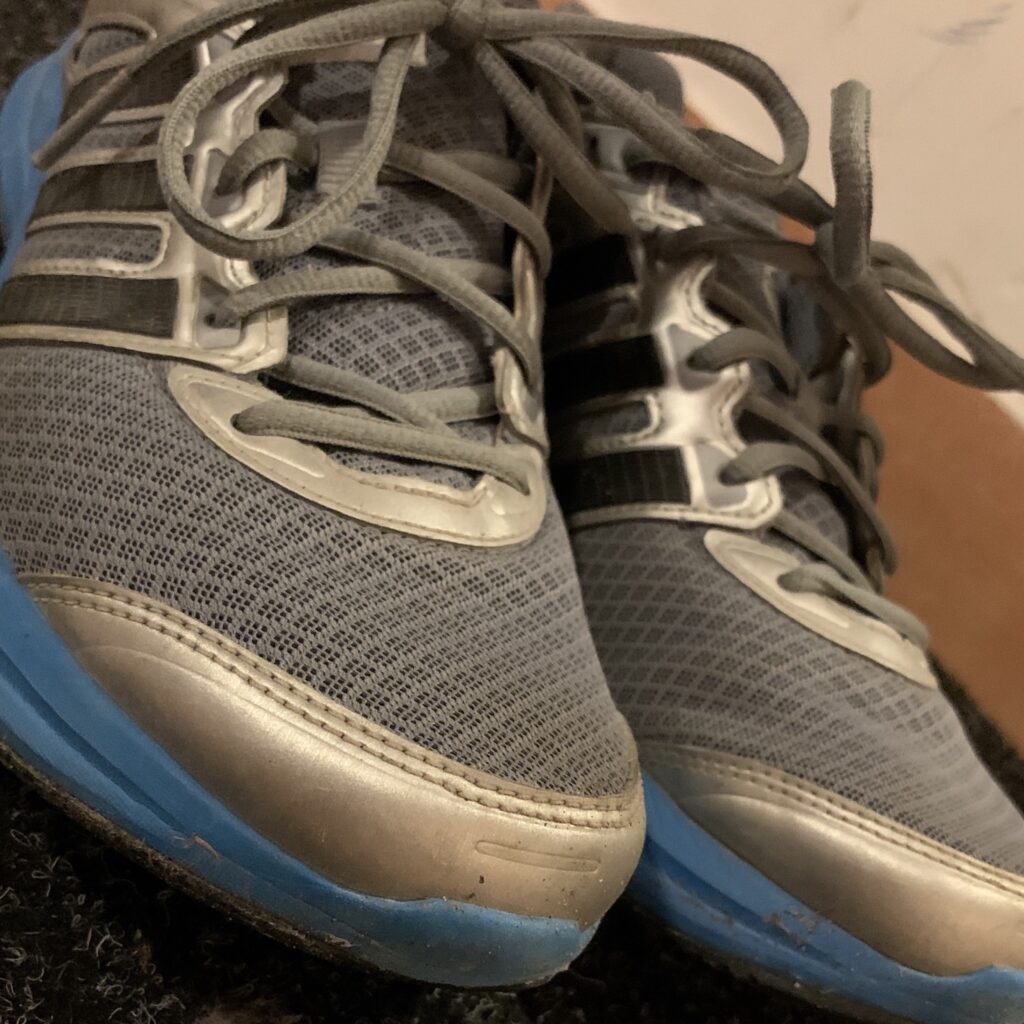
Working at SAP.
daily, 09.01.2020
Daily Photo: 2019 started with a new years resolution. To snap a picture every day. Soon it became a challenge, to snap a meaningful picture. Something that doesn’t repeat. It helped formulate a thought or to express a feeling.

daily, 08.01.2020

Nineteen Eighty Four! Ein Graffiti, heute Früh an einer S-Bahn der MVV in München. Neben dem Graffiti war ein Tag “Doppel Denk” angebracht. Die Schöpfer werden mit Ihrem Werk an das Buch von George Orwell erinnern haben wollen. In dessen Handlung spielt double think eine Grundlegende Rolle.
Das Buch Nineteen Eighty Four wird häufig synonym für die darin stattfindende Überwachung durch den Staat Ozeanien zitiert. Dessen Personifikation als “Big Brother” wird ebenfalls häufig referenziert. Während “Big Brother” die Personifikation der herrschenden “Inneren Partei” Ozeaniens darstellt, dreht das Buch sich auch in weiten Teilen um Begriffe und die Bedeutung von Worten.
Der Begriff “Doppel Denk” beschreibt eine “Neusprech” Methode der – in dem Buch – fiktiven Parteien, Ideen unter Anhängern zu verbreiten. Parteimitgliedern können mit Doppel Denk grundlegend unterschiedliche und teilweise widersprüchliche Überzeugungen (“Krieg ist Frieden“) zu akzeptieren.
Die Methode findet in der Kommunikation moderner Alt Right Anwendung, wenn beispielsweise bestimmte Situationen durch alternative Fakten umgedeutet werden sollen.
daily, doppelplusgut, 07.01.2020

Das obligatorische Foto der Rakete “Fairy Dust“, die der Chaos Computer Club seit 1999 als Logo verwendet. Fairy Dust, wie die Rakete seit dem Chaos Communication Camp 2003 liebevoll getauft wurde, ist 7m groß. Damit macht das Modell auch in einer Halle wie der Messe Leipzig einen bleibenden Eindruck. Eine Lichtinstallation wie ihre glitzernde Oberfläche setzen “Fairy Dust” entsprechend in Szene. Neben der Fairy Dust finden sich in dem Umfeld 2 andere Logos. Zum einen der Datenknoten, der das erste offizielle Logo des Club darstellt.

New Years Resolution: Noch auf alten Schuhen, aber immerhin schon wieder 10km. Eine gute Stunde, ohne Messung. Aber es geht um den Weg, das Ziel ist später im Jahr. Etwas aufzubauen, Kondition zu erwerben, wieder Disziplin zu entwickeln, Regelmäßigkeit zu erreichen, ein Ziel zu haben. Und natürlich um die Gesundheit, den Ausgleich und die Zeit für mich selbst, etwas Abstand von allem anderen zu gewinnen und das Ying und das Yang herzustellen.

Neues Jahr, neue Ordner. Samstag genutzt um das Jahr vorzubereiten. Und einen schlechten Wortwitz zu machen.
04.01.2020

Dekoration in der Hamburgerei Zwei in München Haidhausen.
02.01.2020
Social media is a mistake: Let me start the new decade in the Photo category with a video. In the past year I challenged myself and take a picture every day. The project was inspired by an old, fellow student. It sounded easy in first place, turned into a challenge soon and I use to self-reflect upon achievements and new experiences. Taking a photo of something new every day will make you start think about what you did. Sometimes, after a long day in office, it requires plenty of discipline to pay attention to your schedule and environment.
To measure the result, when starting, I decided to go for Instagram. Get Likes has never been the goal. The level of interaction with the platform and exposure to the crowd I got there gave plenty of insight into how the crowd works. But the service never convinced for many reasons. As stated elsewhere, the experience just re-affirmed my feeling that social media is a mistake.
The medium is driven by vein and pride, just as Scott Galloway put it, the seven deadly sins. These are not good guidance in first place. And they are by no means compatible with the goals of the project, even though it generated plenty of attention and positive feedback.
And finally, the company owning Instagram, Facebook, requires to accept a license through their Terms of Service to grant to them a non-exclusive, transferable, sub-licensable, worldwide license to host, use, distribute, modify, run, copy, publicly perform or display, translate, and create derivative works of your content (consistent with your privacy and application settings) for purposes of making the Instagram Service available. While comprehensible the service needs authority over content to offer the service, these purposes are too broad for what I want to achieve. Instagram is driven by users registered and wouldn’t allow the audience I have in mind to consume the photos without registering. Just try scrolling through the page, it will require registration quickly.
You can end this license anytime by deleting your content or account. Following the Terms of Service, this is the only way to not grant these. And while Instagram offers means to download all content, this still ain’t too easy: all the content over there has meta information, like comments and or locations, that are not straight forward to transfer. Which brings me to one of next years resolutions: not only continue my own project here – to take a photo every day as an act of self-reflection. But also to migrate existing content from Instagram over here.

And the same is true for other social media. For example, LinkedIn does also leverage such mechanisms. While the above is only an example, I try to put more attention to these models. And this page shall serve as a basis to replace others in the .
Social media is a mistake. Take back the web and decentralise the next decade.
Memento Money: Kunst im Kloster St. Ottilien. Memento Money ist eine Anspielung auf das lateinische Memento Mori, das in christlichen Zusammenhängen verwendet wird um an unsere Sterblichkeit zu erinnern.

01. Januar 2020